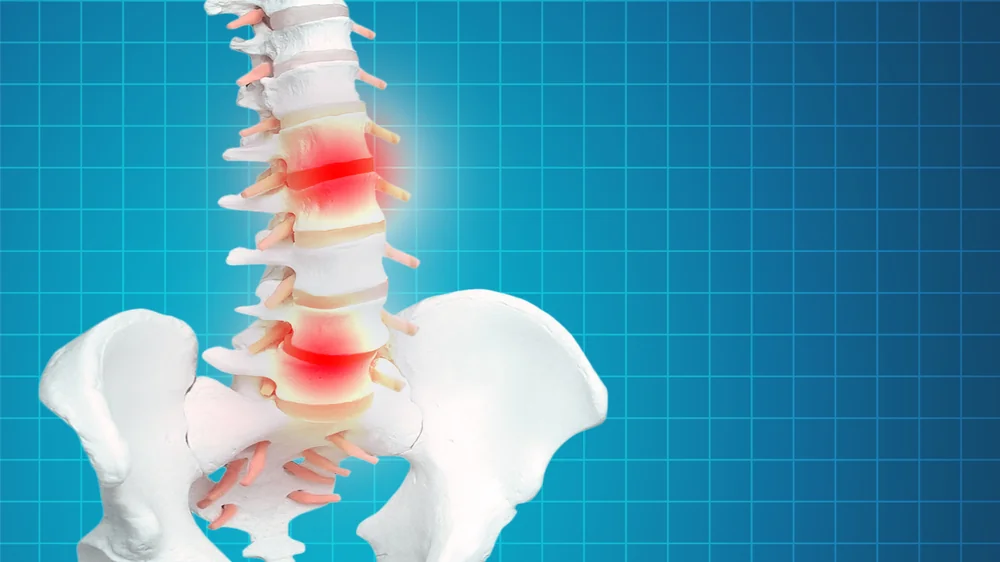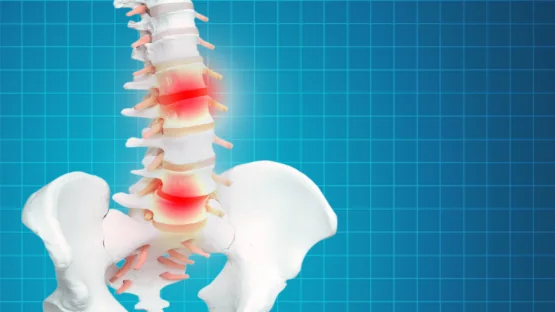Researchers publishing in Aging have outlined a relationship between disc degeneration, macrophage polarization, inflammation, and sirtuins, demonstrating their effectiveness in a rat model of the disease.
A crippling and painful disease
Intervertebral disc degeneration (IDD) is a major cause of pain and disability [1], as it leads to the physical deterioration of the shock-absorbing discs within the spinal column [2]. In particular, the jelly-like center of each of these discs, the nucleus pulposus, loses its cohesion.
Macrophages can be polarized into two different types: M1 for short-term inflammation and clearance of pathogens, the immune system fighting back against immediate threats, and then M2 for long-term healing and repair. However, long-term activation of M1 macrophages is associated with inflammatory diseases and inflammaging, the chronic inflammation associated with aging.
These researchers have previously published a study concluding that inflammatory macrophage infiltration into the lumbar discs destroys the nucleus pulposus and the extracellular matrix in the spine, leading to the progression of disc degeneration [3], which we had reported on at the time. That study also found that DNA methyltransferase 1 (DNMT1) affects macrophage polarization. This new study builds on that previous work, exploring a rat model of IDD and identifying a role of the sirtuin SIRT6 in its progression.
An analysis focusing on pyroptosis
This study differed from the previous study in two crucial ways: it used a rat model rather than a mouse model, and it was geared towards studying pyroptosis, a form of apoptosis (programmed cellular death) that occurs in the presence of significant inflammation. The study group of rats was given a surgery that mimics IDD in people, with a control group given a sham surgery.
Like in their previous work, the researchers used a silencing RNA to stop the expression of DNMT1, and it had similar positive effects in rats as in the previous mouse model: it reduced inflammatory factors, offset their effects on macrophage polarization, and ameliorated disc degeneration in these animals.
However, this time, the researchers also had a model group in which the sirtuin SIRT6 was overexpressed. This was found to have very similar effects in these rats as DNMT1 silencing did. The interleukins IL- 1ß, IL-6, and IL-18, all of which are inflammatory markers of pyroptosis, were significantly decreased by both methods, although not quite to the level of the control group. Direct analysis of apoptosis and proliferation supported these findings, as nucleus pulposus cells were much less likely to die and much more likely to proliferate if DNMT1 was inhibited or SIRT6 was overexpressed.
Affecting a downstream factor
The researchers found that SIRT6 is biologically downstream of DNMT1 and that the sirtuin is directly responsible for balancing the populations of polarized macrophages. However, sirtuins may be considerably easier to administer, making SIRT6 much more appealing as a potentially druggable target. Further work will need to be done to determine if it is possible to develop a sirtuin-related treatment for IDD that does not directly involve silencing or overexpressing RNA.
Literature
[1] James, S. L., Abate, D., Abate, K. H., Abay, S. M., Abbafati, C., Abbasi, N., … & Briggs, A. M. (2018). Global, regional, and national incidence, prevalence, and years lived with disability for 354 diseases and injuries for 195 countries and territories, 1990–2017: a systematic analysis for the Global Burden of Disease Study 2017. The Lancet, 392(10159), 1789-1858.
[2] Oichi, T., Taniguchi, Y., Oshima, Y., Tanaka, S., & Saito, T. (2020). Pathomechanism of intervertebral disc degeneration. JOR spine, 3(1), e1076.
[3] Hou, Y., Shi, G., Guo, Y., & Shi, J. (2020). Epigenetic modulation of macrophage polarization prevents lumbar disc degeneration. Aging (Albany NY), 12(8), 6558.




